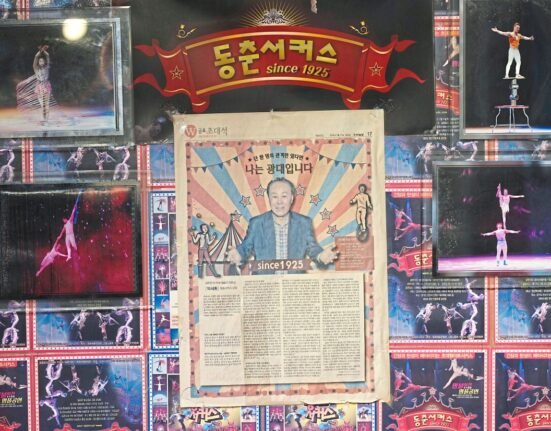“These decisions highlight the fact-intensive nature of the inquiry into a potential infringer’s legitimate business and commercial intent. Without concrete proof of experimental intent, the defense is unlikely to succeed.”
 In a previous article, we analyzed the contours of the common law experimental use exemption. Now, we will explore the application of the exemption to common research activities, including those at universities and research institutions, in cases spanning recent decades. These cases illustrate the narrow confines of the experimental use exemption and its limited applicability in scenarios involving activities with direct or indirect commercial or business-related objectives. As a result, researchers should tread carefully and not count on the exemption to shield them from liability for patent infringement.
In a previous article, we analyzed the contours of the common law experimental use exemption. Now, we will explore the application of the exemption to common research activities, including those at universities and research institutions, in cases spanning recent decades. These cases illustrate the narrow confines of the experimental use exemption and its limited applicability in scenarios involving activities with direct or indirect commercial or business-related objectives. As a result, researchers should tread carefully and not count on the exemption to shield them from liability for patent infringement.
Giese v. Pierce Chem. Co., 29 F. Supp. 2d 33 (D. Mass 1998)
In Giese v. Pierce Chem. Co., the court considered whether selling kits to academic researchers fell within the scope of the research exemption, thereby shielding defendant sellers from liability for contributory infringement and induced infringement of the asserted patents covering a method by which multiple layers of chemicals are attached to form a stable system. The patent owner, Roger W. Giese (“Giese”), alleged that Pierce Chemical Co. (“Pierce”) and Vector Laboratories, Inc. (“Vector”) contributed to or actively induced the direct infringement of his patents by selling kits that cover chemical methods used in cell detection systems to academic researchers.
The defendants argued that end-users of the kits (academic researchers) were protected by the experimental use exemption because they often used the kits for research purposes rather than commercial exploitation.
The court acknowledged that the experimental use doctrine could shield end-users from direct infringement claims, which would also absolve Vector and Pierce from liability for contributory or induced infringement but emphasized that it was the defendants’ responsibility to prove that end-users qualified for protection under the exemption. Since they did not meet this burden, summary judgment on non-infringement was denied. The court did, however, reject Giese’s contention that Vector and Pierce were precluded from claiming protection under the exemption because they sold the kits for a profit, clarifying that profit alone does not disqualify defendants from benefiting from non-infringing uses of their products.
Infigen, Inc. v. Advanced Cell Tech., Inc., 65 F. Supp. 2d 967 (W.D. Wis. 1999)
Infigen owned two patents directed to a process for activating bovine oocytes for use in cloning without spermatozoa. Defendant Advanced Cell was a competitor of Infigen, operating in the same field. Steven Stice, also a defendant, worked for both Advanced Cell and Infigen’s predecessor company, and he was a named inventor on one of the asserted patents.
While defendants did not dispute that they used methods covered by the asserted patents, they argued that they should be excused from liability under the common law experimental use exemption. Notably, however, Defendants did not present any argument or evidence to support their case, and instead merely argued that it should be left to a jury to decide “whether science – and mankind – benefits when researchers [] use otherwise patented technology as controls or otherwise in their university-based research laboratories,” and “whether a remote promise of some commercial success should override the benefits of such university-based research.”
The district court disagreed and, in response, noted that the defendants were being sued for work that they did in a commercial laboratory, not a university research capacity. It was also undisputed that the purpose of defendants’ experiments was “to develop transgenic cattle that could be used for commercial purposes.” As a result, there was no evidence to support that the work done was “philosophical” in nature or merely to satisfy the curiosity of researchers. In finding the exemption inapplicable, the district court also cited the fact that Congress has never sought fit to grant an exemption for infringement to university-based research laboratories.
Moore U.S.A. Inc. v. Std. Register Co., 144 F. Sup. 2d 188 (W.D.N.Y. 2001)
The court considered whether the defendant Standard Register Co.’s (“SRC”) manufacture of 10,000 accused mailers in Switzerland, based on materials and blueprints originating in the United States, followed by displaying and distributing the mailers at a trade show, fell within the scope of the research exemption.
The plaintiff Moore U.S.A. Inc. (“Moore”) held a patent covering a specific type of two-way C-Fold mailer, which sends outgoing communication (e.g., bills) with a detachable receipt and a pre-addressed return envelope. After deciding to enter the U.S. market, SRC purchased a machine from a Swiss company that would “assemble” two-way C-Fold mailers. SRC traveled to Switzerland with the paper, adhesive, and blueprints to make the forms and the machine. While in Switzerland, SRC produced about 10,000 of the accused forms, most of which they brought back to the U.S. and used for demonstrations at a trade show in Denver. According to SRC’s technical director, none of the forms made before summer 1994 were sold—they were “experimental” and “were simply thrown away after they were evaluated.” Based on these activities, SRC argued that it could not have possibly infringed the asserted patent because it used the accused forms strictly for experimental purposes, never for commercial purposes.
The court disagreed, finding it to be self-evident that using paper, glue, and blueprints to manufacture 10,000 accused mailers in Switzerland was for the commercial purpose of testing and evaluating the forms themselves, as well as the machine, and not for the purpose of satisfying SRC’s own “idle curiosity.” The court also noted that SRC’s use of the accused forms was “in keeping with [its] legitimate business,” and therefore, commercial, not experimental, in nature.
Applera Corp. v. MJ Research Inc., 311 F. Supp. 2d 293 (D Conn. 2004)
Plaintiff Applera owned several patents directed to a thermal cycling system for performing polymerase chain reaction (PCR) in certain fields and licenses the right to perform PCR on a thermal cycler in its fields to the end user in two ways. First, the end user either pays a royalty when purchasing PCR reagents, or second, the end user pays a licensing fee for each thermal cycler. Defendants are manufacturers and suppliers of thermal cyclers but do not participate in either licensing program.
Several of MJ’s largest customers—including U.S. research laboratories and universities—to whom MJ sold its thermal cyclers use those cyclers to perform research activities related to the U.S. Human Genome project, which sought to research human deoxyribonucleic acid (DNA) and make the information available to the public free of charge. MJ wanted to present evidence and testimony at trial that these customers and uses were exempt from liability for direct infringement of the patents-in-suit (and therefore MJ was exempt from liability for inducing infringement of the patents-in-suit) based on the common law experimental use exemption. In support, MJ argued that these customers were not seeking to use the cyclers to obtain a profit or commercially gain from their research but rather were acting for the advancement of science.
The district court disagreed and granted Applera’s motion to preclude MJ from presenting evidence or argument to the jury suggesting that a research university or laboratory using MJ’s thermal cyclers could be exempt from direct infringement of the patents-in-suit because their use is non-commercial or not-for-profit. Citing the potential to confuse the jury and the lack of any actual evidence (as opposed to mere argument) to support the experimental use exemption, the district court emphasized that the exemption is extremely limited and narrow in scope. The district court also re-focused the inquiry under Madey v. Duke Univ., 307 F.3d 1351 (Fed. Cir. 2002) as not “on whether uses are non-commercial or not-for-profit but rather whether they are in keeping with defendants’ customers’ legitimate business interests,” which can include traditionally non-commercial purposes like “educating project participants, [] increasing the university’s or laboratory’s status or ability to lure research grants, students, or researchers.” Here, Applera presented evidence suggesting that at least part of MJ’s customer base (which MJ argued fell within the exemption) included commercial research outfits and molecular biology researchers.
The district court did, however, leave the door open for MJ to present its defense to the jury if MJ could “proffer to the Court the evidence they believe is legally relevant to the applicability of the experimental use defense with respect to any particular customer.”
Monsanto Co. v. E.I. DuPont De Nemours & Co., 2010 WL 3039210 (E.D. Mo. July 30, 2010)
The court considered whether DuPont’s efforts—to stack its own Optimum® GAT® (“OGAT”) glyphosate-tolerant trait technology with Roundup Ready® (“RR”) soybean and corn traits it licensed from Monsanto—fell within the scope of the research exemption, thereby shielding DuPont from liability for patent infringement.
Monsanto alleged that DuPont infringed patents it owned covering genetically modified crops resistant to glyphosate herbicides by incorporating traits DuPont licensed from Monsanto into DuPont’s seed stack. DuPont argued that its use of Monsanto’s patented technology was protected under the experimental use exemption because it was conducting experiments to improve its own soybean products and not for commercial exploitation. However, evidence showed that DuPont intended to commercialize the modified soybeans and market them as a competitive alternative to Monsanto’s products.
The court held that DuPont’s activities did not qualify for the research exemption because Dupont’s use of Monsanto’s traits for its own seed stack products had commercial implications and was “directly in line with their legitimate business operations in manufacturing seed products.” The court noted that Defendants admitted they intended to commercialize some of the seed stacks, and even if they did not intend to commercialize all of them, such commercialization was consistent with the defendant’s business operations. The use of Monsanto’s patented technology was deemed integral to DuPont’s business strategy, making it a commercial activity subject to infringement liability.
What’s Next?
These decisions highlight the fact-intensive nature of the inquiry into a potential infringer’s legitimate business and commercial intent. Without concrete proof of experimental intent, the defense is unlikely to succeed. Moreover, general claims of research use, or claims of minimal infringing use, are insufficient. Any research that is undertaken to advance commercial objectives, however indirect, is not likely to be protected. The exemption also does not cover activities tied to legitimate business strategies, such as product development or competitive positioning. Despite the factual nature of this inquiry, the common law experimental use exemption rarely makes it to the jury. Most cases are resolved at the summary judgment stage or earlier, making it even more critical to document non-commercial intent and experimental methodology to demonstrate eligibility for the exemption.
Image Source: Deposit Photos
Author: 260philip1
Image ID: 591130196







